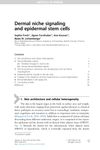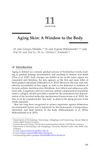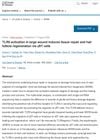Author Response: Role of Distinct Fibroblast Lineages and Immune Cells in Dermal Repair Following UV Radiation-Induced Tissue Damage
November 2021
TLDR Different types of skin cells and immune cells play a role in healing UV-damaged skin, with chronic UV exposure causing lasting damage to certain skin cells.
The study by Rognoni et al. found that different fibroblast populations in the skin respond differently to UV radiation and tissue remodeling. Papillary fibroblasts in the upper dermis are responsible for tissue repair after acute UV radiation, but chronic UV-induced damage is harder to repair due to a severe loss of these fibroblasts, a phenomenon also seen in aging skin. The study also discovered that CD4 and CD8 T cells support UV-induced tissue repair by maintaining papillary fibroblasts. After acute UVB exposure, fibroblast numbers in the upper dermis of adult mouse skin decrease but return to normal levels 14 days post-irradiation. However, after chronic UVB exposure, fibroblast depletion persists for 30 days. In human skin, a significant loss of dermal fibroblasts occurs 1 day post UV radiation, followed by a transient increase during the repair phase and a return to pre-UV treatment levels after two weeks.



